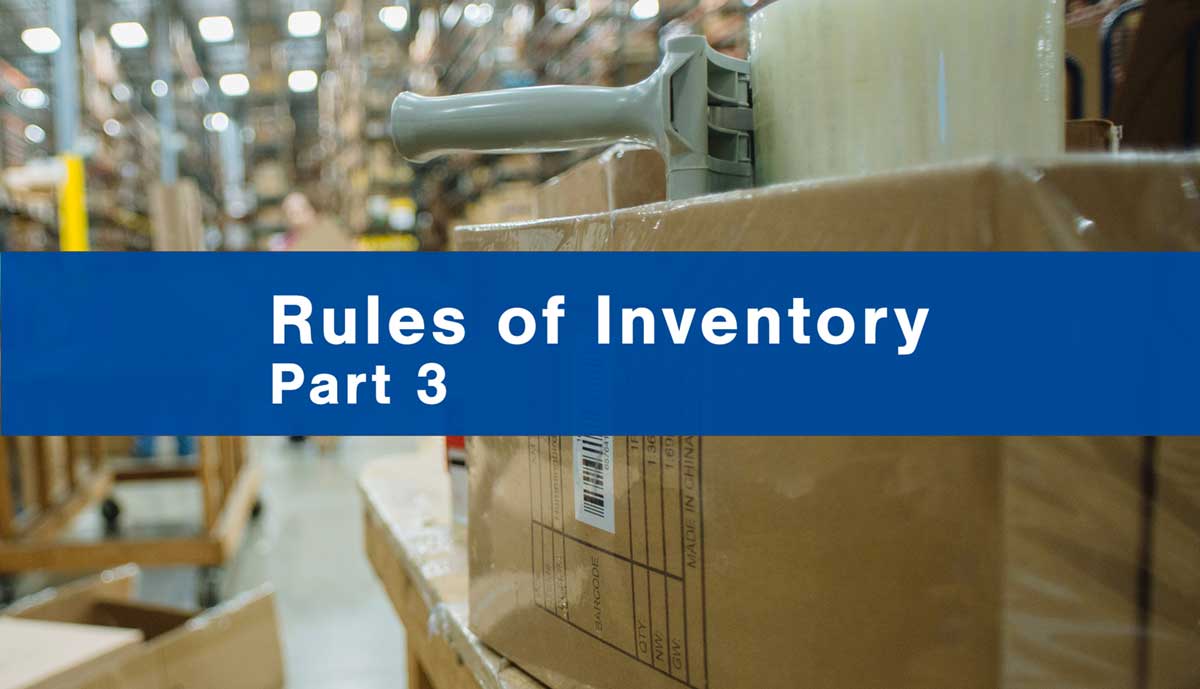The First 3 Rules of Inventory --- Rule #3: Know thy Inventory

Reading logistics industry publications, one can easily get the sense that getting inventory levels right is the main challenge businesses face. Putting it this way is misleading, however, because it sounds as if the issue is about stock quantities.
Most times having the right level of inventory is not the main problem. The main problem is knowing what your precise level of inventory is, and what state it is in. That is why Rule #3 of inventory is...
Know thy Inventory
Having inaccurate data on your stock levels leads to a number of problems. Some examples:
- Imagine having just the right number of products for a certain SKU, given demand -- but your team is working with old data and, based on that data, projects that your inventory will fall short of demand in a month. It is obvious what your team would do: begin the process of acquiring more inventory to make up the difference. Now there will be excess inventory, and you will be in an Overstock situation.
- Now imagine the opposite: your data is not updated rapidly enough and so misses a sudden surge in orders, which depletes your stock. The next week, you think that your warehouse has enough inventory to covers the orders until you can restock... until the warehouse manager calls, having run out of a popular item. Now you are in a Backorder situation.
- Over time, delays in acquiring data cause your warehouse to fluctuate between Overstock and Out of Stock situations. Floor space is taken up by non-moving items, but fast-moving items never seem to be on-hand, creating congested warehouse floors and unnecessary delays.
- Inaccurate data on inventory make loss and theft harder to detect and prevent.
- Inaccurate stock levels are communicated to vendors, partners, and ecommerce sites. The company’s brand is damaged, as it comes to be seen as less reliable. Supply chain problems arise as vendors and partners work from inaccurate information.
The utterly surprising twist here is that all of these things can happen even if you start out with absolutely perfect stock levels.
This can’t be emphasized enough: managing inventory is not just about having the right levels; it’s knowing what those levels are, in real time. If you do not have an accurate picture of your inventory levels, you will quickly devolve into one of the other scenarios, even if your inventory had been planned perfectly.
In the ideal situation, you have just enough inventory to meet demand, given information about trends, season, target market tastes, and competitors. You also have real time data on all the crucial elements:
What SKUs do you have, and in what quantities? There is more to know than just “in stock” and “out of stock,” too. For example, having an accurate picture of your inventory might require knowing an item’s:
- On Hand Quantity (The quantity that exists in the warehouse, not including Open PO Quantity)
- Unavailable Quantity (The quantity of items that are frozen, and therefore unavailable, though not damaged)
- Open Order Quantity (The quantity of inventory on order, but not yet processed)
- Damaged Quantity (The quantity of inventory marked as damaged)
- Orderable Quantity (The quantity available for ordering once frozen and damaged items have been accounted for)
Where is each SKU located? For example, knowing where each SKU is located, and how fast it moves, you can more easily optimize your floor space. Items that are frequently purchased together can be moved closer to each other, and fast selling items can be put where they will be easiest for your staff to reach.
What’s the lead time to order (or manufacture) each item? This will help you determine how far out you need to plan, and when you need to reorder.
Is there enough labor force to move the stock when needed? Products are not the only assets that need to be coordinated. Having appropriate quantities and floor placement will not matter if you do not have the labor necessary to move those items in a timely manner. This is why having real time data is important: your organization can be made aware of spikes in demand and adjust the day’s activities as needed.
In an ideal situation, your organization would have the tools to capture all of this data, subsequently using it to optimize stock levels and create optimal workflows at your facilities.
In sum, the question “How much inventory should I carry?” is not as simple as it seems, because the question encapsulates more than just stock levels. Knowing your actual stock levels—and more-- is crucial. Without that knowledge, inventory will ping back and forth between too much and too little, causing all sorts of problems for your logistics. AND your customer service.
That’s why Rule #3 of Inventory is one of the most important: Know thy Inventory.
In the meantime, if you are interested in 3pl software solutions that can tackle some of these problems, and a demonstration of in action, contact us.
.png?width=225&height=60&name=Logo%20(7).png)


